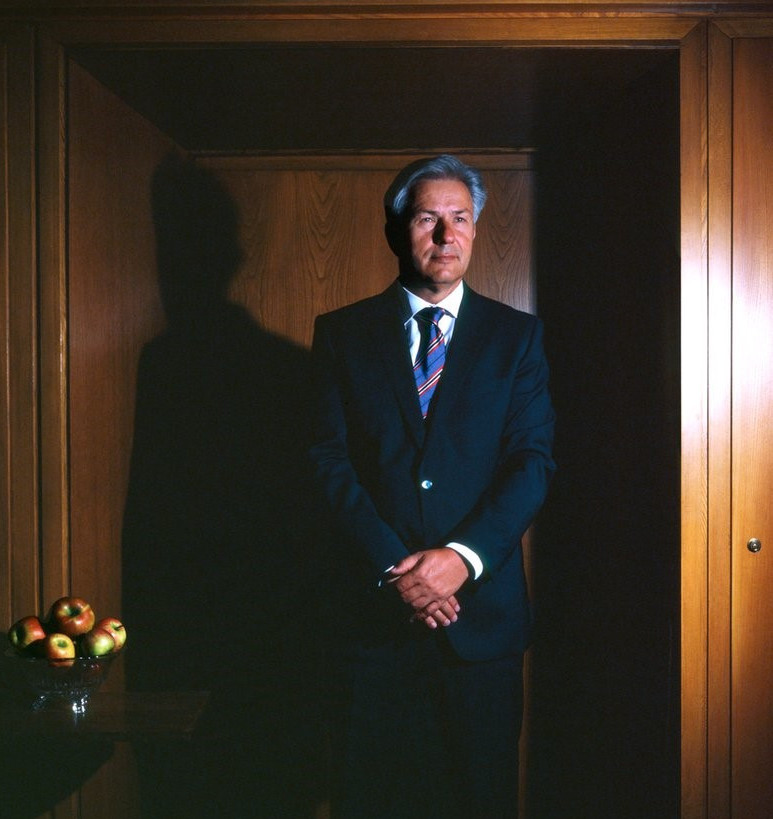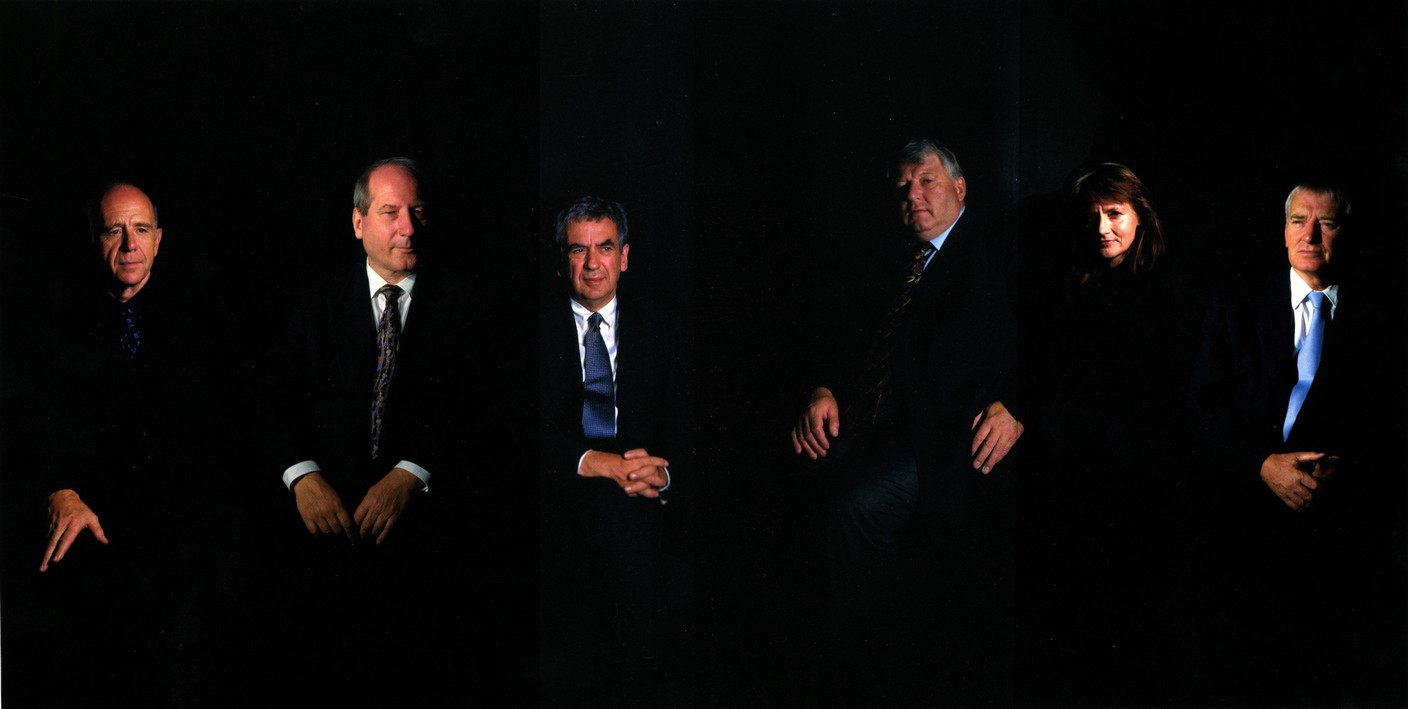Michael Clegg and Yair Martin Guttmann have been practising portrait photography since the 1980s. In this post-modern era where painting is being reexamined, the two artists use the codes of 17th century Dutch painting to portrait the powerful of this world, whether from the political, industrial or cultural spheres, in highly theatrical settings.
In very large formats, in colour, always posed, with a very pronounced chiaroscuro, their portraits are commissions. But much more clever than that, the artists manage to reverse the role of power in relation to these rich and influential men and women, by taking back control.
Reversing the roles
The portraits are indeed commissions, but the people being portrayed have no say in the pose, the setting or the eye contact. It is the artists who decide, who set the scene, who compose and impose. Moreover, the photos remain the property of the artists, except for the one accepted by the client.
It is important to know that during the shooting session, several photos are taken, but only one photo is presented to the client as the final work. This is then accepted or rejected. If the work is accepted, ownership of the work passes to the client. But if it is rejected, the work remains the property of the artists. This exhibition organised by the Konschthal Esch, entitled Rejected, only presents those works that the commissioner did not accept, did not want to be seen.
The Rejected
The title Rejected brings to mind the Salon des Refusés in Paris in 1863, which was organised on the fringes of the official Salon and was the first illustration of the emergence of artistic modernity in opposition to the official taste embodied by the jury of the Academy of Fine Arts. It is too obvious not to think that the artists are expressing a criticism through this choice and underlining the overly "official" taste of their sponsors, who have failed to recognise the audacity of their photographs. Indeed, their portraits are critical and do not necessarily reflect an image of glorification. Through the light, the looks, the posture, the elements of the setting when there are any, Clegg & Guttmann's portraits always have an ambiguous character, a possible second reading.
We do not know the reason for the refusal of these portraits presented in the exhibition, but for some we can guess: we see a portrait of a child with a look so disturbing that it becomes frightening, in another, a wife who takes the limelight too much compared to her husband... For others, the reasons are certainly more personal and remain unsaid.
These works, although they are failures, nevertheless remain - for some of them - in the art market circuit. A nice way for artists to keep power on their side and a very visionary approach to the art economy in circular mode. Nothing is lost, "waste" is recycled... By their status, these works also question the power of images, even today, when we are totally inundated with them.
And for the attentive visitor, an intruding work will not escape them. It is a work commissioned by the Konschthal and whose protagonists are none other than the leaders of Esch's cultural policy: Jean-Paul Espen, secretary general of the city, alderman in charge of culture, mayor of Esch-sur-Alzette and Ralph Waltmans, director of cultural affairs. It is not yet known whether the work will be accepted or rejected...
Clegg & Guttmann, Rejected, , until 15 January 2023.
This article was originally published in and has been translated by Delano.




